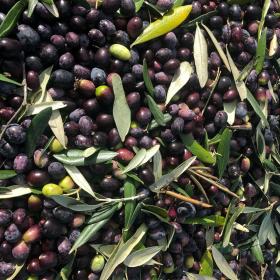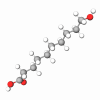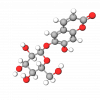As a long-standing food ingredient, olive oil (Olea Europaea Fruit Oil) is a basic ingredient in the Mediterranean diet. Termed as ‘mono-unsaturated oil’ par excellence, olive oil is the only vegetable lipid that can be eaten after an exclusively mechanical process, which means extraction without using other substances.
It is the oil obtained by olive crushing is a precious aliment for the content of vitamins, fatty acids, and polyphenols that have potent antioxidant activity. In fact, all the other oils must undergo different production processes, that is extraction by means of solvents or steam, rectification, fractioning, etc.
Moreover, olive oil is different from many common oils for its high content of mono-unsaturated fatty acids and the relatively low content of unsaturated and poly-unsaturated fatty acids. The high content of mono-unsaturated fatty acids makes Olea Europaea fruit oil able to reduce the rate of cardiovascular disorders and some tumors thanks also to the abundant presence of antioxidant agents, such as tocopherols, tocotrienols, and squalene).
In cosmetics, good polarity, miscibility with many oils, good stability, and a high presence of oleic chains are good reasons themselves to employ olive oil as a source of lipid moieties with special effects. Olive oil evens out dry, flaky, and rough skin while providing a soothing, moisturizing, antioxidant, and anti-inflammatory effect.Olive oil contains oleic, palmitic, and linoleic fatty acids to moisturize and nourish skin and may also have antibacterial and antifungal properties. Moreover, an excellent unsaponifiable fraction (0,6-1,5%) is present. This is mostly made up of squalene (over 80%) in addition to other hydrocarbons, triterpenes and triterpenic alcohols, sterols (beta-sitosterol, stigmasterol, campesterol), tocopherols and carotenoids. The unsaponifiable fraction of olive oil is believed to perform an important emollient and sebum-controlling property, thanks to its affinity with the physiological composition of the sebum and the horny layer surface.
Ingredients
What are the benefits and advantages of Olea Europaea fruit oil?
Nowadays, Olea Europaea fruit oil is a key ingredient in formulating ingredients and functional actives for cosmetic purposes. It offers the formulator a mixture of natural triglycerides rich in mono-unsaturated chains with high physiological skin compatibility.
This is strongly proved by the age-long employment of olive oil in the European and Mediterranean areas. In other words, it offers the undoubted advantage of a lipid fraction with a long history of contact with vital cells. Its lipid structure is able to integrate with the horny layer, thus helping to restore the structural balance of the hydro-lipidic structure needed to perform the barrier function.
The peculiar structure of the main fatty acid may also act as a vehicle to carry the different active principles of cosmetic interest in depth. It is known that mono-unsaturated chains are means of increased permeability compared to both saturated and poly-unsaturated chains.
As stated above, the other particularly interesting aspect of olive oil concerns its unsaponifiable fraction. The simultaneous presence of the above-mentioned substances with antioxidant power as well as emollient and sebum-controlling effect contributes to skin normalization and its protection from the effects of free radicals. Finally, being highly compatible and combining well with a lot of lipids, either natural or not, it allows to achieve emulsions with homogeneous fatty phases.What is chemical composition of fatty acids in olive oil?
| Oleic | C18:1 | 76,9% |
| Palmitic | C16:0 | 10,5% |
| Linoleic | C18:2 | 7,6% |
| Stearic | C18:0 | 2,6% |
| Palmitoleic | C16:1 | 0,6% |
| Linolenic | C18:1 | 0,6% |
| Arachidonic | C20:0 | 0,3% |
| Behenic | C22:0 | 0,2% |
| Other | 0,7% |











